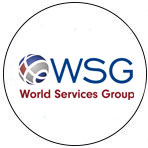
GC: What has been the most significant use of technology that you have adopted in performing your legal function?
Ted Lazarus: Without question, the ability to work collaboratively on documents, presentations and spreadsheets using cloud-based Google applications has transformed the way we do our jobs. Teams of lawyers exchanging ideas in real time, both with each other and with other functions, ensures that all points of view are heard and maximises efficiency.
Kerry Phillip: At Vodafone, we are adopting contract lifecycle management technologies to speed up contracting and give access to the wealth of data contained in our contracts. This allows the business to begin the process and only brings lawyers into the fold when the contract is new or different. It has freed up our lawyers to work on much more creative and higher value-add matters.
GC: Has data changed the process of finding experts and outside counsel?
KP: Certainly the breadth and range of online information is very helpful, as it does make searching quick and easy. Recommendations from someone you know are still most powerful though.
GC: What has been the most innovative way you have seen outside counsel embracing technology?
TL: By embracing web-based tools such as Google Docs and meeting via video conferencing applications such as Google Hangouts, outside counsel can be more ‘present’ than ever before. Technology that enables outside lawyers to be a part of daily life at the company has been enormously helpful.
KP: For us, it’s really the increase in management information, but this has come from alternative legal suppliers more than from law firms.
GC: What data and statistics are most useful for in-house counsel to increase efficiencies and decision-making when working with outside counsel?
KP: What I find most useful is looking at the range of spend with that law firm via benchmark of pricing (best obtained through a competitive RFP, in my view), up-to-date billing information, view of assumptions, and fixed price billing.
GC: Are there any challenges for in-house counsel when using technology to work with external providers?
TL: I think that the greatest challenge for in-house lawyers at technology companies in working with outside counsel is figuring out how to get the firm familiar with the nuances of the products and the business as quickly as possible.
GC: What might the future in-house legal team look like if technology continues to be applied in more ways throughout your function?
KP: It’s going to be a very different shape, with lawyers at the core but surrounded by legal technologists, a strong operations team, data specialists, administrators, IT expertise and legal process outsourcing. This is the direction I am already taking my team and it influenced how I set up an operations team last year.
GC: Do you think that technology will influence the way that in-house lawyers interact with each other internally?
TL: I think we’re seeing that the power of technology to connect people – in particular, the ability to create a cross-functional dialogue − is transforming the in-house legal function and more closely integrating lawyers into the day-to-day operations of the businesses they support. Gone are the days when product teams briefed lawyers on a roadmap and then sent them away for days to ponder the legal implications in a cloistered office in order to report back with a formal memo. Web-based tools place our minds in the same room, even when we are sitting thousands of miles away from one another.
How can technology support legal in-house teams?
Larry Pascal, chairman of World Services Group (WSG), discusses how the business utilises technology to support in-house legal teams and the broader legal community.
‘The wealth of information available today online has certainly had an impact on the selection of experts and outside counsel by in-house counsel. Whether it has made those selections any better or easier, however, is another question entirely. There are significant transaction costs to searching the wilds of the internet to discover the right expert for any given job, and there never will be any replacement for the old-fashioned recommendation by a trusted contact.
In a sense, WSG combines these two types of searches. Our aim is for in-house counsel to rely on WSG membership as an important signifier of quality, much like a strong referral, and that’s one reason why we put members through such a rigorous vetting process. Once firm and individual members are in our network, in-house counsel can search their profiles, writings, and other qualifications to identify those most appropriate for the job.
WSG tries to make it very easy for inside counsel to ‘go outside’ at a moment’s notice, and that’s something we see happening more in the future. We expect to see inside counsel increasingly focus on the tasks that they perform most efficiently, while relying on outside assistance for other tasks. We also expect that in the future, technology will be designed to work in harmony with the personal relationships still driving the legal business. We recognise this phenomenon, which is one reason why WSG does not only have member firms, but individual members as well – more than 19,000 of them.
Many law firms join WSG because they know that other members will deliver business to them. But, interestingly, savvy firms join for the purpose of being able to offer the same quality of solutions for their clients through giving work to other quality members. The RFP is still a mainstay for in-house lawyers, and our members are often glad of their WSG membership when completing RFPs. One example: a firm in the Netherlands that was putting itself up for a cross-border project on a tight timeframe requested assistance on our network. Within 24 hours, it received multiple responses from firms within each of the territories involved in the representation, and was able to include its impressive new partner firms in the RFP response.
As outside counsels’ budgets get streamlined and it increasingly becomes the norm for in-house legal departments to expect expanded services from law firms, using our site’s all-inclusive relevancy search to find the lawyer and firm with the most relevant expertise for the deal eliminates the extensive vetting from the process.
The technology on the WSG platform makes our service to our members far more powerful and accessible than ever before. We have found that the key to successful implementation of technology is based on ease of use and the speed and accuracy of achieving the action. A basic relevancy search of our database can instantly identify a leading capital markets firm in France, the best mining representation in Brazil, or prominent antitrust lawyers in the United States.
Our members also appreciate a sophisticated feature that allows them to share files securely. Using our site, they can establish secure portals through which they can upload, store and work jointly on documents with other members.
A major part of the continued success of WSG is our ongoing commitment to updating the platform. This year, a major upgrade to the firm dashboards allows greater accessibility to the firms to measure potential opportunities, and a user-friendly referral tracking tool that establishes successful business for all participants of a deal. This has created a useful, easy and accessible way for WSG members to track the work they achieve together on deals and litigation.’
